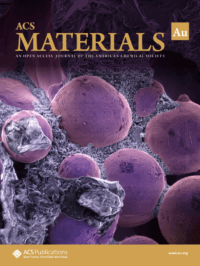This Special Issue will highlight the design, manufacturing, functional properties, and mathematical/computational modeling of complex materials. Submit your manuscript by December 31, 2025.

In Biology, "complexity" is defined as the performance-oriented structural organization of matter combining order and disorder. Complexity in various human-made and biological materials can be spontaneous but its emergence is hard to predict because it (1) originates from extensive multibody interactions; (2) incorporates diverse non-ideal components and (3) spans multiple lengths scales. The practical need for complex materials stems from desired functionality that requires specific combinations of properties typically considered to be orthogonal: e.g., high strength + low weight, electrical conductivity + optical transparency, or recyclability + environmental robustness. Likewise, complex materials manufacturing at scale will require simple, energy efficient methods of assembly.
This Special Issue from ACS Materials Au will highlight the design, manufacturing, functional properties, and mathematical/computational modeling of complex materials.
Topics include, but are not limited to:
- Synthesis and properties of gel networks, high-performance composites, complex particles, and high entropy materials
- Methods for characterization of complex materials, including microscopy tools
- Additive manufacturing of complex materials (e.g., 3D printing, self-organization)
- Application of mathematical methods to complex materials (e.g., graph theory, network science, fractal mathematics, percolation theory, machine learning).
Submit your manuscript by December 31, 2025.
Organizing Editors
Prof. Stephanie Brock, Deputy Editor, ACS Materials Au
Wayne State University, United States
Prof. Nicholas Kotov, Guest Editor
Michigan State University, United States
Prof. Martin Thuo, Guest Editor
North Carolina State University, United States
Prof. Nadja-Carola Bigall, Guest Editor
University of Hamburg, Germany
Prof. Qian Chen, Guest Editor
University of Illinois Urbana-Champaign, United States
Submission Information
We welcome submissions for this Special Issue through December 31, 2025. For more information on submission requirements, please visit the journal’s Author Guidelines page.
Accepted manuscripts for consideration in this Special Issue will include research articles, perspectives, reviews, and tutorials.Papers accepted for publication for this Special Issue will be available ASAP (as soon as publishable) online. After all submissions have been published, they will then be compiled online on a dedicated landing page to form the Special Issue. Manuscripts submitted for consideration will undergo the full rigorous peer review process expected from ACS journals.
ACS Materials Au is a fully open access journal, which means your work will be immediately freely available for anyone to read in perpetuity. To learn more about open access options for researchers, visit our Open Science Resource Center.
How to Submit
- Log in to the ACS Publishing Center.
- Select the "Journals" tab.
- Choose ACS Materials Au.
- Click "Submit."
- Select your manuscript type, and, under "Special Issue Selection," choose “Design of Complex Materials: Combining Order, Disorder and Hierarchical Organization."
If you have any general questions regarding submission to this Special Issue, please contact Prof. Stephanie Brock (brock-office@materialsau.acs.org).
